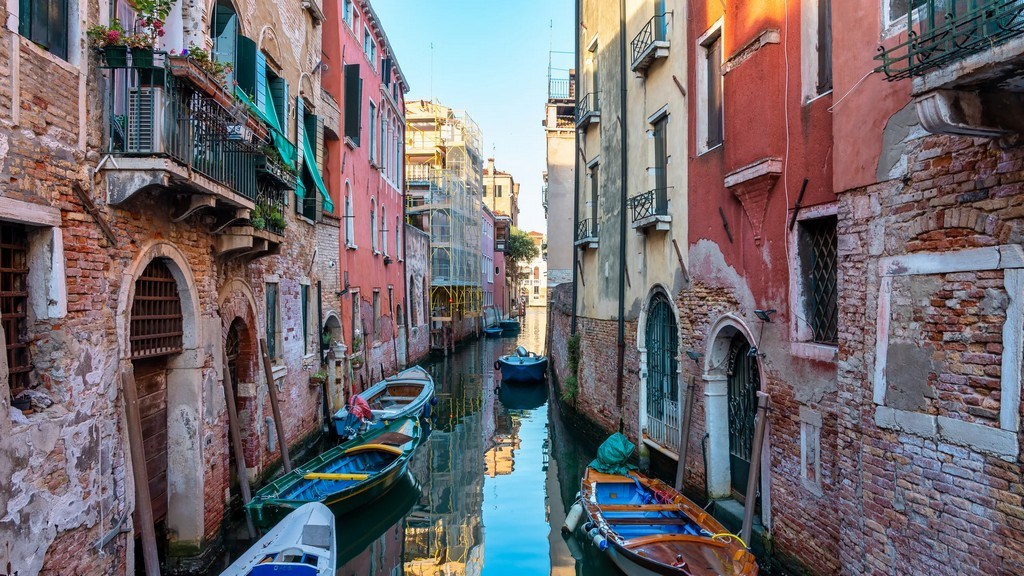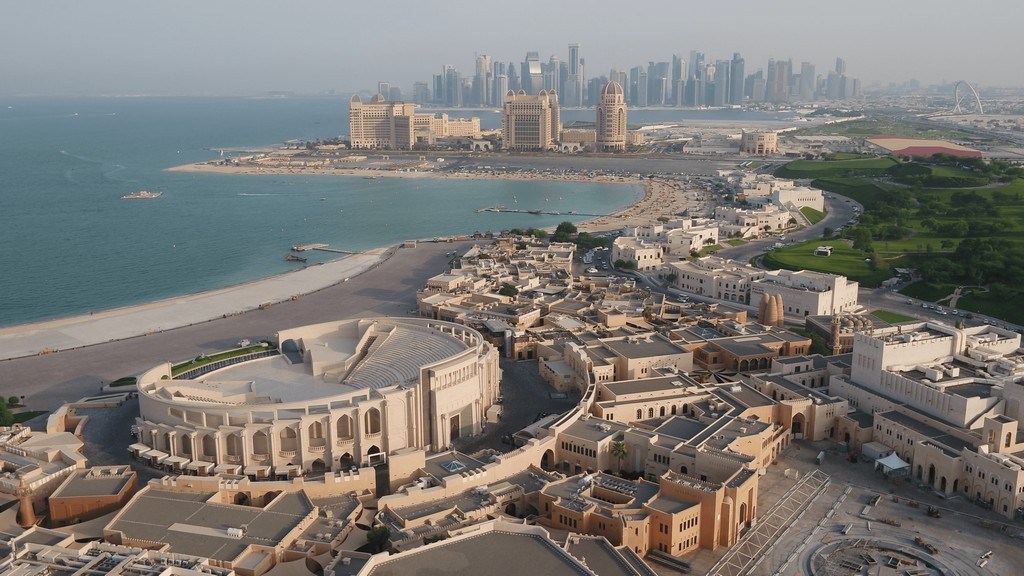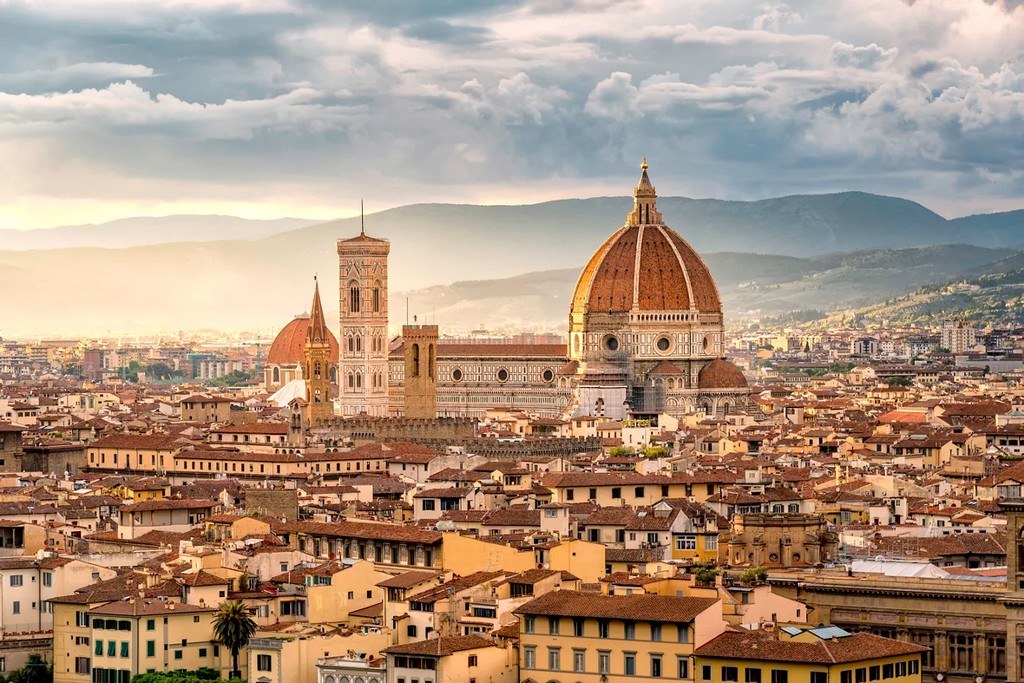
Venice hit me like a dream—a city where streets are made of water and the only traffic is a graceful gondola. It’s absolutely unlike anywhere else on Earth. Every corner turned reveals a hidden *campo* (square), every bridge offers a postcard view, and the whole place feels steeped in centuries of history and art. I’ve spent hours getting deliciously lost in its narrow *calle*, following the scent of fresh seafood and the sound of distant opera. Forget the tourist crowds for a moment; this is a city that rewards the wanderer. Get ready to ditch your map and dive into the magic of the floating city. Below are my must-dos to help you navigate this lagoon masterpiece.
Why Visit Venice?
Venice isn’t just a place; it’s an experience—a glorious, improbable masterpiece of engineering and art. It’s the ultimate romantic getaway and a living museum. Here’s why you need to put Venice on your list:
- The Canals & Gondolas: It’s the most iconic transit system in the world. Floating under the bridges is an essential, unforgettable experience.
- Architectural Wonders: From the grandeur of St. Mark’s Basilica to the opulence of Doge’s Palace, the architecture is a stunning blend of Byzantine, Gothic, and Renaissance styles.
- Island Hopping: Explore the colorful fisherman’s houses of Burano and the ancient glass-making traditions of Murano.
- Hidden *Calle* (Alleys): Get away from the main thoroughfares and discover quiet, authentic corners where local life still thrives.
- World-Class Art: Home to masterpieces by Titian, Tintoretto, and Veronese, you’ll find incredible art tucked away in every church and gallery.
Venice is a city that will challenge your expectations and absolutely steal your heart—a romantic, historic, and beautiful marvel.
What Are the Best Things to Do in Venice? (For Your First Visit)
St. Mark’s Basilica (Basilica di San Marco)
The city’s most famous cathedral is a stunning example of Byzantine architecture, shimmering with over 86,000 square feet of golden mosaics. To save precious time, **pre-booking your entry is essential**. You can also visit the museum and the balcony for a great view of St. Mark’s Square. Secure your Skip-the-Line Ticket via GetYourGuide.
Doge’s Palace (Palazzo Ducale)
This was the seat of Venetian political power for centuries. Its opulent government halls, the Great Council Chamber, and the walk across the Bridge of Sighs to the prisons are must-sees. Book a guided tour or priority entry via Viator.
Gondola Ride on the Grand Canal
The quintessential Venetian experience. Glide along the main waterway and quieter side canals to get a unique city perspective. Many tours now include live or audio commentary. Schedule your Gondola Ride on GetYourGuide.
Rialto Bridge (Ponte di Rialto)
The oldest and most famous of the four bridges crossing the Grand Canal. It’s a prime photo spot, though it’s always busy. The surrounding area is excellent for shopping and grabbing a bite near the Rialto Market.
St. Mark’s Campanile (Campanile di San Marco)
The Basilica’s bell tower offers the most spectacular panoramic view of Venice and the lagoon. Access is by elevator, but lines can be long. Look for advance tickets for the Campanile on TripAdvisor.
Murano and Burano Islands Excursion
A popular day trip to see Burano’s colorful houses and Murano’s world-famous glass-blowing artistry. Combined tours are the most efficient way to see both. Guided Boat Tour of Murano and Burano via GetYourGuide.
Peggy Guggenheim Collection
One of Italy’s most important modern art museums, housed in the Palazzo Venier dei Leoni. It features works by Picasso, Dalí, and Pollock. The view of the Grand Canal from the garden is beautiful. Buy your ticket for the Peggy Guggenheim Collection via Viator.
Bridge of Sighs (Ponte dei Sospiri)
This Baroque bridge links the Doge’s Palace to the old prisons. It’s famous for the legend that prisoners would sigh seeing their last view of Venice before being jailed. The only way to cross it is by visiting the Doge’s Palace.
Teatro La Fenice
One of the most famous opera houses in Europe, rebuilt after a devastating fire. A guided tour is worthwhile to learn about its turbulent history and lavish architecture. Check for tours and performances on Viator.
Libreria Acqua Alta
One of the world’s most charming and eccentric bookstores, known for storing its books in bathtubs, gondolas, and kayaks to protect them from high tides (**acqua alta**). It’s a true “hidden gem” for a unique photo op.
Popular Tours Right Now
/tp_widget]
What’s the Best Month to Visit Venice?
The shoulder seasons—**April to June** and **September to October**—are ideal. Temperatures are comfortable (highs in the 60s to low 80s °F) for walking tours and gondola rides, with fewer crowds than mid-summer. May and September are particularly pleasant. Avoid mid-July and August if possible, as it’s the peak season, meaning high heat, prices, and congestion. Winter (November to March) offers budget deals but brings cooler, damp weather and the risk of *acqua alta* (high water), except during the lively Carnevale, typically in February.
/tp_widget]
How to Get to Venice
Venice is served by Venice Marco Polo Airport (VCE), located on the mainland about 13 km from the city. It’s a major international hub—check WayAway for the best flight deals. From the airport:
- Water Bus (Alilaguna): A ferry service that connects the airport dock directly to key points in Venice and the islands (Lido, Murano). ($16–22, 60–90 min).
- Airport Bus (ATVO/ACTV): Express buses to Piazzale Roma (the main transportation hub on the edge of the island, where cars stop). ($10–12, 20–30 min).
- Train: If you fly into Treviso (TSF), take a shuttle bus to Mestre station, then a quick regional train to Santa Lucia (S.L.) station in Venice.
- Water Taxi: A luxurious but expensive private transfer directly to your hotel dock. ($110–150).
For travelers arriving by train, the main station is Venice Santa Lucia (Venezia S.L.), which sits directly on the Grand Canal and requires immediate water or foot travel.
How to Get Around Venice
Forget cars and buses—Venice is fundamentally a walking city built on canals. Getting around is an experience in itself, but the public transport network is all water-based.
The primary mode of transit is the Vaporetto (water bus), run by ACTV. A single ride is expensive ($9.50), so a travel pass is essential:
- Vaporetto Pass: Purchase a 1, 2, 3, or 7-day pass for unlimited use. This is crucial for visiting outer islands like Murano and Burano and for navigating the length of the Grand Canal.
- Walking: This is the best way to discover the city’s hidden gems and intricate alleyways. Always carry a map (or use Google Maps) and be prepared to get lost!
- Traghetto: These are simple gondolas used to ferry people across the Grand Canal at specific points for a small fee (around $2).
Tips for Tourists Using Transport:
- If traveling for more than one day, buy an ACTV tourist travel card to save money.
- The only place vehicles can reach is Piazzale Roma; book accommodation near a Vaporetto stop if mobility is a concern.
- Walking shoes are non-negotiable—you will cover miles of stone streets and bridges.
Conclusion: Venice demands that you slow down, embrace walking, and yield to the rhythms of the water. Its labyrinthine charm is best explored on foot, punctuated by peaceful boat rides. Don’t rush; just soak in the unique atmosphere of this floating masterpiece. Discover the history and hidden corners of the Serenissima with our detailed Venice guide!
Note: This article contains affiliate links. If you purchase something I’ve recommended, I’ll earn a small commission at no extra cost to you. I really appreciate your support and I hope this guide helps you ♡









